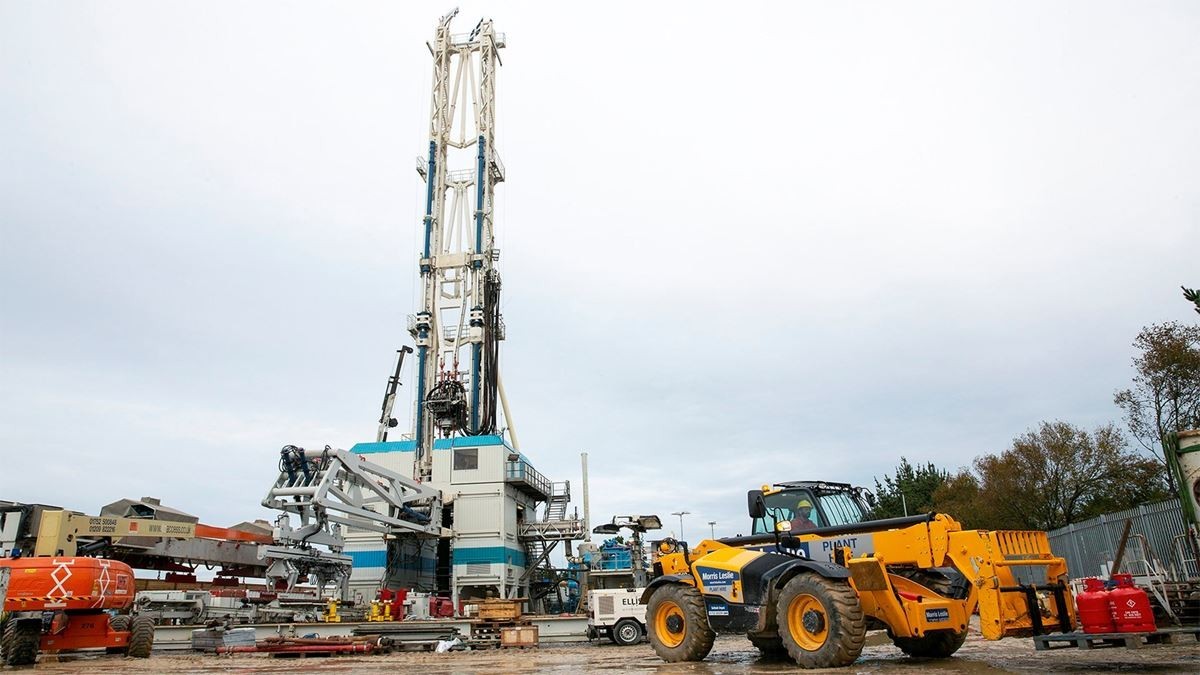Lancashire For Shale chair Lee Petts delivered an informative and entertaining presentation to delegates at the latest gathering of the Blackpool Business Leader's Group (BBLG) which took place at the Grand Hotel in the seaside resort on Friday 31st May 2019.
Lee patiently explained how the controls on induced seismicity (micro earthquakes caused by the fracking process) risked stifling the shale gas industry, and could deny Lancashire the the economic opportunities it offers. The Traffic Light System, as it is known, means operators have to stop working for 18 hours at a time if earth tremors of just 0.5 ML (local magnitude) are detected, and that this very low trigger threshold is proving unworkable and scientifically unsound.
He pointed out how the rules were first introduced by the then Secretary of State for Energy and Climate Change, Ed Davey MP, who, in 2012, said that the levels were set intentionally low but that they were temporary and would be reviewed in light of emerging evidence - something the govement has since failed to do, despite the evidence now being available as a result of Cuadrilla's fracking activity on the Fylde in the last quarter of 2018.
Using an industrial tape measure, and with the aid of five audience volunteers, Lee set about putting the 0.5 ML threshold into perspective by highlighting how the wells at Preston New Road are so deep that they could accomodate the Blackpool Tower and London's Shard stacked atop each other vertically, with three of the world's tallest building, the Burj Khalifa in Dubai, stacked on top of those.

He explained how fracking takes place at depths of around 2.5 km and that, by the time the energy from a 0.5 ML tremor at that depth has dissipated upwards, through over a mile of rock, the surface impact is negligible.
Lee then illustrated the surface impacts of a 1.5 ML tremor at 2.5 km using comparisons developed by the University of Liverpool. As four of his volunteers watched closely, a fifth dropped a honey dew melon on the floor from a height of about 1 metre to see what effect it would have on a bowl of standing water; it was clear that all observers were underwhelmed.

Lee used the demonstrations to clearly make the case that a review of the Traffic Light System is greatly needed, given that it appears to be providing protection from risks that are immaterial whilst set at such a low level.
Delegates were shocked to learn that, whilst seismicity linked to shale gas extraction is being tightly controlled, a deep geothermal project in Cornwall - that involves materially similar drilling and fracking processes - is permitted to operate with no government-mandated earthquake controls despite the developer warning that it would likely be responsible for tremors of 4.0 ML and above (thousands of times more powerful than a 0.5 ML tremor because the Richter Scale is logarithmic) and that these would be felt by local residents.

Lee pointed out that this difference in regulatory stance is very problematic, particularly given that the Regulator's Code says regulation must be consistent, risk-based and proportionate.
He concluded by outlining how further delays to UK shale gas extraction risked locking the country into higher emission imports for longer, and left delegates to think about how, if it can renege on its promises to the shale gas industry, the government could do just the same to any other sector, potentially impacting any and all businesses in the room.
Enjoyed this? Read more from Lancashire For Shale





















